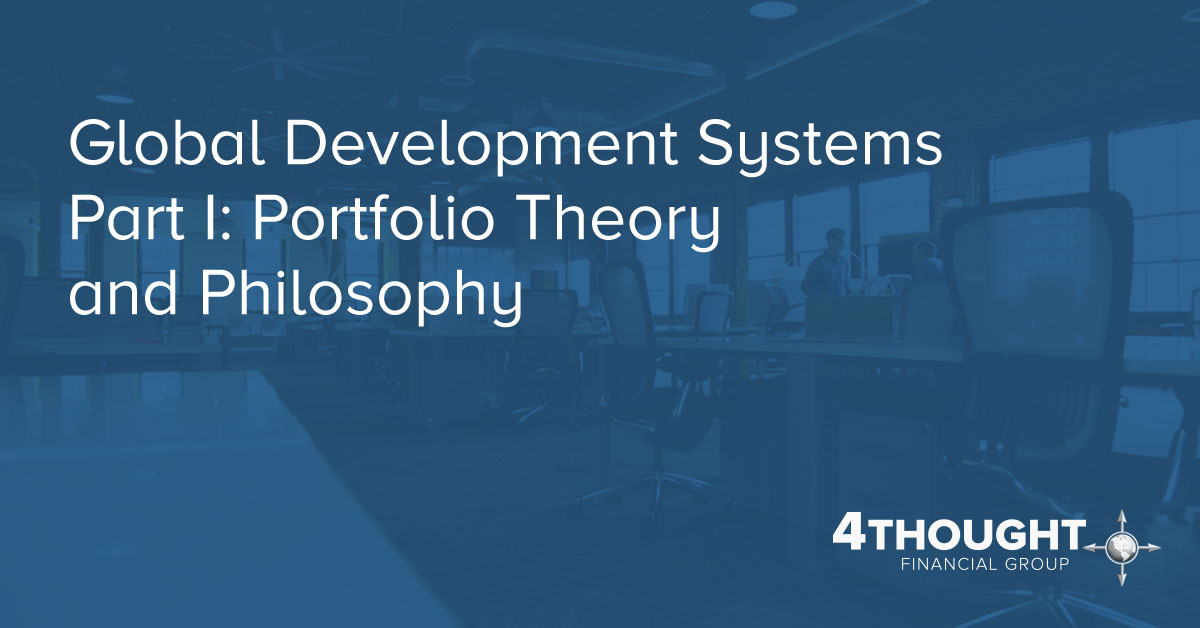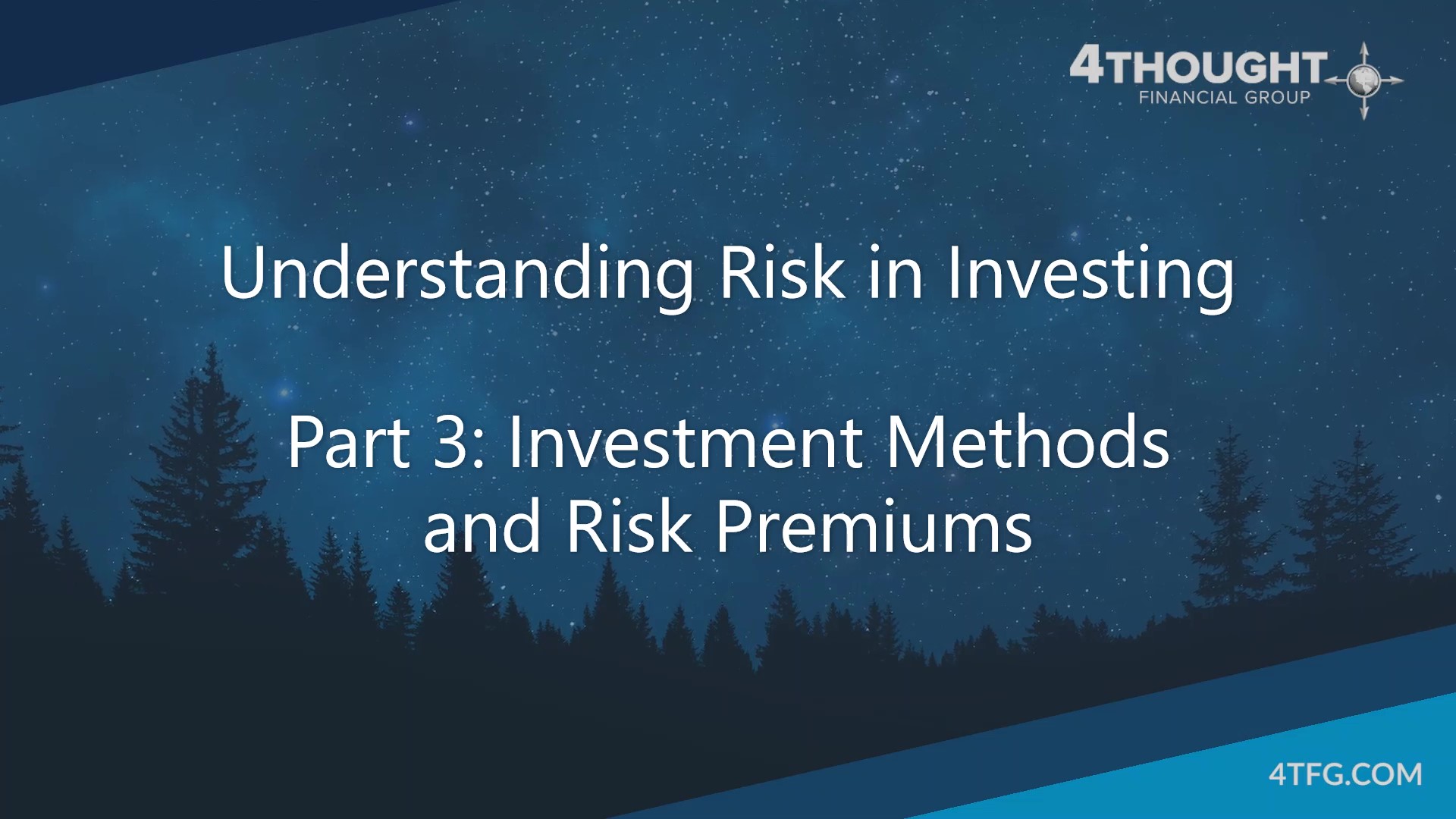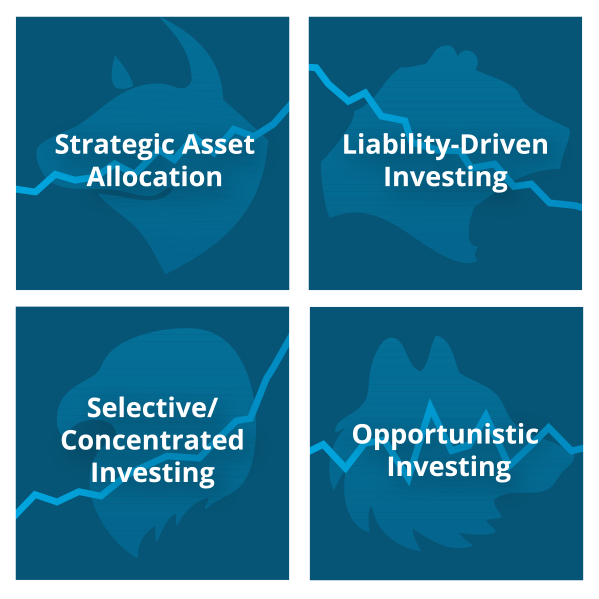
With the 2007-2009 financial system crisis and economic downturn as an impetus, some portfolio management professionals have begun to ascertain that Modern Portfolio Theory, as it has traditionally been applied, is due for an overhaul. In our last issue of the Compass & Crosshairs, in which we explored some of the various methods that might be applied under a “Multi-Contingency Investing” methodology, we briefly made mention of a Global Development Perspective Strategic Asset Allocation philosophy.
Under this broad theoretical perspective, which views the world as an evolving, dynamic system, one of the practical outgrowths for portfolio management purposes is what we will refer to as a “Global Development Systems” portfolio management methodology. In this issue, we will outline the basic reasoning behind the use of such a portfolio management system and explain the underlying theoretical tenets. In the following (August) issue, we will identify exactly how such a specific method can be applied to client portfolios.
Underlying Theoretical Tenets
Modern portfolio theory is correct, but incomplete
Under the Global Development Systems method, Modern Portfolio Theory is assumed to be incomplete in its explanation of how best to create and manage portfolios, and a belief in improvement of the traditional methods of MPT application is prevalent. Whereas the underlying math behind the original theory is accurate in its assertion of the use of a pre-defined strategic asset allocation that incorporates non-correlated and low-correlation assets in order to reduce portfolio volatility over long time periods, it has failed to fully address other risk issues such as “systematic” risk.
In addition, MPT has not been particularly helpful in defining how best to determine capital market assumptions (which determine asset allocations), short of the utilization of a short historical time period for statistical projections. The capital market assumption question has in large part been left up to the appliers of the theory, and most have not done a particularly good job of it. Many pieces of the puzzle are still missing.
Gradualism and punctuated equilibrium: The world is not static
Since the advent of Modern Portfolio Theory in the 1960’s, the traditional users of the theory have had a brief historical period of relatively little change from the standpoint of financial/economic history through which to test the mettle of their methodologies. In that brief time period a particular strain of MPT developed that was highly specialized in its adaptation for the period in which stresses were applied to it. This was generally a period of gradual (but not unimportant) economic change, although the equilibrium of the system was of course periodically disrupted by macroeconomic stimuli. During this period, globalization was the dominating gradual trend – a trend that slowly crept up on portfolio managers who did not adapt to it because of their lack of knowledge as to the degree to which it was occurring. But the punctuation of this equilibrium trend by the most recent shock to the financial system has awoken at least some of those who had previously been lead into complacency.
...structural economic changes may occur gradually over long time periods...
The reality that has not been fully accepted by the portfolio management community is that the world is not a static place whose economic change can be encapsulated in a simple static and unchanging asset allocation model for all time. Contrarily, structural economic changes may occur gradually over long time periods, and may be punctuated by brief interludes of rapid change, both of which may create secular market trends. These changes must be recognized and adapted to, if not explicitly through tactical manipulation (which is often difficult, expensive, and ineffective), then through the adaptation of the overall portfolio philosophy and implementation strategies.
The traditional application of MPT is stagnant and no longer applicable
A Global Development Systems theorist will hold that since the advent of MPT, much of the practical application of the theory has strayed from the original mathematical truths that it defined. So what is needed is a re-application of the base tenets of the theory within the context of our newfound current and future global economic/financial structure. Many of the strains of MPT application that have developed through traditions over the years have developed from a sense of “this is the way it has always been, and this is the way it will always be.” In effect, many managers have been lulled into a stupor as a result of an extended period of low risk with outsized returns that has been prevalent since the end of World War II in the United States, and has been accentuated during the last thirty years of rapid and unsustainable credit expansion.
The assumption that this would continue indefinitely, or that there is no other way that things could be, because of a short historical perspective, has been shown to be an error. However, the “great moderation” of double-digit returns and low volatility in the stock market that occurred in recent history is not necessarily a once-in-a-world experience, nor was it completely reliant on easy credit. Underlying economic growth was a major factor.
Similar periods of growth have occurred in various developed nations throughout history, and there may be reason to believe that such experiences may be shared by all national/regional economies in one form or another over time as they go through periods of rapid economic development and cultural change. With these thoughts in mind, a static traditionalist approach will likely result in inferior performance relative to the more adaptive alternatives as economies, both locally and globally, go through periods of evolution or revolution.
Adaptation in portfolio management theory is necessary simply to maintain the historical average rates of return and standard deviation of returns
Adaptability and differentiation in investment management are necessary not just for outperformance of competing philosophies, but simply to maintain the assumed levels of portfolio return that were commonplace before the significant changes to the structure of the global economy that are currently being experienced as a result of the financial crisis and longer-term international economic development factors.
Little evidence exists to suggest that the average historical rates of return for the last fifty years in the United States will continue to be available given domestic governmental changes, cultural shifts, and a potential slowing of economic growth due to the winding-down of a long term secular national economic expansion (All of which have been experienced by other smaller developed-country economies on a (mostly) lesser scale in the past). If the US is truly “coming of age” in the economic development respect, and moving towards an “old-growth” economy similar to those of Western Europe and Japan, then it would be fair to assume lower rates of return on common stock investments in the United States going forward, with closer similarity to the returns of dividend-paying large caps and other “cash cows” on average. But while this may be experienced in the United States currently, it does not mean that the rest of the world is experiencing such changes simultaneously.
The world economy is not just one gradually evolving economic landscape
Most countries are in fact on a different place on the curve of economic development. There is also nothing that says that things could not change rapidly towards a technology-based rapid growth economy again in the US. In fact, some day they probably will – and as such, portfolio management theory must be poised to rapidly adapt to these structural changes in the global economy. The world economy is not just one gradually evolving economic landscape, but is also composed of other smaller economies that may evolve in fits and starts at different times and in different directions than the global economy as a whole.
Historical mean-variance optimization is insufficient- Forward looking capital market assumptions are required
Historical Mean-Variance optimization is the most-often applied methodology for determining asset allocations under traditional MPT methodologies. Historical optimization seeks to identify combinations of assets that have exhibited the most optimal risk adjusted returns (based on correlation measures) for a given target long term rate of return using a fixed historical period to determine the averages and assumptions. Many institutional-style contemporary managers also apply what they call “forward-looking” capital market assumptions, although such capital market assumptions are often represented in only slight variations from historical means.
The result is that all of the industry’s portfolios look predominantly the same, and that, more importantly, their allocations are based on what is generally a very short period of economic history that may or may not be representative of either the broader historical averages or our economic future – the most important period for our purposes. For the purposes of managing investor portfolios, in theory what happened historically is actually irrelevant. It is relevant only to the extent to which it can predict the future – but for the most part, historical modeling projections have been ineffective in predicting or warning against the mass of risks that investors face. The disclaimer that “Past performance is no indicator of future results” holds more truth than most people would like to believe.
An infinitely long-term, global historical perspective is required. Reliance on recent periods and domestic assumptions is deceiving.
What has been learned is that it is important that portfolio modelers utilize independently determined capital market assumptions that do not place undue weighting on recent financial history, but instead focus on expectations for the future, with an eye towards a much broader and longer historical perspective. An economic history perspective of hundreds or even thousands of years is most beneficial, and not with a focus on domestic or European financial history, but global financial/economic history. To take such a viewpoint is more beneficial in terms of the ability of a modeler to properly asses the risks that an event or economic change will occur. To do otherwise greatly underestimates the risks associated with the management of portfolios and the politico-economic system. This has been proven quite clearly throughout the financial system crisis during 2007-2009.
However, unfortunately not even a perspective that takes into account the entirety of human economic history can fully assess the risks that we may face in the future. Only forethought and pre-emptive innovation are capable of limiting the risk associated with events that have seldom or never been experienced before.
Nationalism has no place in portfolio management
If a portfolio modeler is to be objective in determining asset allocations, by definition he/she cannot also be a nationalist in determining geographical weightings of holdings. Nationalist leanings have clearly been one of the determinants of asset allocations in the past, and most notably under traditional institutional-style asset allocation, which has historically been characterized by significant over-weights to domestic economies.
Although this phenomenon is common amongst portfolio managers in other counties, nowhere has this been more prevalent than with US portfolio managers.
It is best to leave one’s political and patriotic feelings at home when managing portfolios
While significant over-weights to the US economy have also made a great deal of sense over the last thirty years based on the use of historical mean-variance optimization and linear projections, such over-weights have also been unduly influenced by a propensity towards favoring allocations towards one’s home country, without any regard for the logic for doing so. One must ask oneself whether it makes sense to invest 80% of an equity portfolio in US stock when less than 25% of global gross domestic product is currently derived from the United States. It is best to leave one’s political and patriotic feelings at home when managing portfolios in order to maintain a rational mathematical perspective.
Overweighting to any one country, including the domestic one is a concentrated risk
The clear problem with such a huge overweight to any one national economy is the concentration of risk within that country’s borders. This results in political risk, currency risk, and domestic economy-related risks. This is clearly true of the US economy as well. The returns of any portfolio can be grossly affected by the underlying economic growth rates and financial systems to which it is exposed. If an overexposure to the US economy or any other one is present, we see rapid drops in portfolio value upon the occurrence of any localized systemic risk.
This concept was made apparent throughout 2008 as the US economy (and portfolio values) dropped substantially. Meanwhile, non-US economies also witnessed unappealing circumstances in many cases, but many of them circumvented US-size portfolio drops, or at least did not have them occur at the same time, leaving portfolios with greater geographical diversification better-placed and with less volatility than concentrated US-centric portfolios. We should note here that the overall issue at hand here is not the performance of US economy in specific, but the risk associated with a gross and illogical overweighting to any national economy.
Economic Development is ultimately the underlying driver of portfolio returns
Traditional portfolio creation methodologies have historically paid little attention to capturing exposure to the most important underlying driver of portfolio returns – Economic Development. Economic development has all over the world been associated with wholesale improvements in human lifespans, standards of living, socio-cultural shifts, increased real incomes, and technological innovation.
All things being equal, a well-run business in a booming economy will increase in value much faster than a similarly-run business in a stagnant economy.
Economic development is personified in the development of private sector businesses that are ultimately responsible for the majority of the advances described above. It is predominantly these businesses that experience huge advances in share values as increases in consumer demand and steady improvements in innovation and technology become integrated into the psyche and culture of a regional economy. All things being equal, a well-run business in a booming economy will increase in value much faster than a similarly-run business in a stagnant economy. Thus, portfolio allocation should first concern itself with the acquisition of exposure to underlying economic development before determining the investment style, asset sub-class, and specific securities that will be selected. To miss this step in portfolio allocation is to neglect what ultimately drives portfolio performance in a well-diversified portfolio.
This assessment is consistent with the origins of Modern Portfolio Theory and Efficient Frontier optimization, which attempt to define the “Market Portfolio” and to diversify away “non-systematic” risk by gaining exposure not to the risks of specific companies or industries, but to the “system” as a whole. For the Global Development Systems manager, the “system” is a global one.
The difference between this and traditional assessments is that a Global Development Systems methodology diversifies away non-systematic risk in an improved manner that also accounts for changes in the “Market Portfolio” that occur over time, in effect by defining a “Future Market Portfolio” that focuses on the probabilities for future growth in the global economy rather than on the historical growth of the last 50 years.
“Emerging markets” are fundamentally misunderstood
The typical gut reaction of a professional investor or portfolio manager to the words “Emerging Markets” is one of either general revulsion from the assumed huge risks involved in investing in these economies or one of exhilaration at the thought of a “speculative” asset class. Emerging Markets exposure is generally limited to very small percentages of an overall portfolio in traditional modeling, in the 10% or less range, primarily because of the high degree of risk that is assumed to be inherent – which is itself a misunderstanding.
One of the problems with this assessment is that it is based on the performance of a limited number of large cap stocks that generally have a high degree of exposure to commodities or natural resources-driven business models, sectors that are by their very nature volatile and unpredictable whether they are located in an “emerging market” or a “developed” one.
But in reality, the “Emerging Markets” class is simply a geographical delineation that covers every country and region of the world outside of the “developed economies” of the United States, Canada, Western Europe, Japan, and Australia. In this sense, “Emerging Markets” is a blanket term for the broader economies of over 100 countries around the world (The “emerging markets” generalization may be subdivided into “Developing” and “Undeveloped” economies” or otherwise). What is represented in the EM name is not a few large cap natural resource stocks, but literally thousands upon thousands of companies from every conceivable sector, each of which has the potential to exhibit low or negative correlation with other assets in a portfolio via their requisite geographies, microeconomic factors, and macroeconomic factors.
It is in these economies that the greatest potential for growth lies relative to their “developed country” counterparts, if for no other reason, simply because of their ability to rapidly adopt and even improve upon the advances that their predecessors in economic development made before them. In the field of economic development research, this is sometimes referred to as “leapfrogging.”
While the reasons to consider investment in Emerging Markets as a speculative investment are manifold, this misses the underlying point: Emerging markets are a large part of the global “Market Portfolio” as described by Modern Portfolio Theory, and have been neglected as such. If we are truly to apply MPT in full, it requires that the “Market Portfolio” includes assets in similar proportions to those experienced in reality. Traditional modeling fails to do this with any alacrity.
Political risk is in the eye of the beholder
One of the often-held beliefs with regards to the risks of emerging markets is that political/systemic risk is omnipresent and substantial. This is true, but it is also true of developed country economies and the domestic economy – as many unsuspecting US-centric investors are now finding out to the severe detriment of their portfolios. The involvement of governments and non-governmental institutions in their own financial and economic systems affects every national economy throughout the globe. This is inescapable from the standpoint of looking at an individual national economy.
In many cases, the perception of the level of political risk in another country is determined by the culture from which the perceiving investor derives his/her values – values which may differ substantially from the culture of the country from which his investment derives its returns. The result is an increase in the perception of political risk, regardless of its actual presence.
To be clear, generally “emerging markets” will exhibit a higher degree of political risk than developed country counterparts, in some cases because of a lack of the full development of stabilizing institutions and market mechanisms that may be present in developed countries. However, there is a way to limit specific-country political risks to the point that they are no longer a risk for an overall portfolio – and that is through geographical diversification. A portfolio that has exposure to a number of emerging economies around the world in addition to exposures to developed economies and the domestic one is better equipped to manage political risks, and ultimately market volatility.
While any one emerging market nation will probably have greater political risk than the US, a portfolio that includes many emerging markets nations will, by definition, have lower political risk than a portfolio that is solely US-based. Therefore, with regards to traditional US-Centric or Developed-country-centric portfolio modeling, the political risk is actually more concentrated and higher than a portfolio that is fully globally diversified with a substantial inclusion of emerging and frontier markets assets.
Currency risk is significant and unappealing, but controllable
The most significant hurdle to the achievement of low volatility and superior performance under a Global Development Systems portfolio is that which is associated with fluctuation in the value of the US Dollar. Because a large portion of a globally diversified portfolio is denominated in foreign currencies, upon appreciation of the US dollar and subsequent conversion of foreign currencies on holdings sales, an “artificial” reduction of value will have occurred on the assets. The same may occur in the opposite direction on depreciation of the US dollar.
Currency fluctuation should be generally be viewed as a zero-sum, no-value-add risk to be eliminated under this philosophy of portfolio management, as the primary intention is to gain exposure to underlying economic growth and asset appreciation, and not to generate exposure to a factor that cannot add a net positive value to the portfolio over the long term, but will instead only increase portfolio volatility.
To reduce or eliminate this risk requires the inclusion of various hedging tactics. In some cases, however, the portfolio manager may choose to either hedge or un-hedge the portfolio based on his/her expectations for a dominant secular trend – although this is generally a riskier and more speculative approach.
Back-tests confirm the theory
To most portfolio managers and investors, a need for statistical proof of historical performance of an investment philosophy is necessary before application of such theory. In recognition of this, we recently conducted a private study to back-test the historical performance of the Global Development Systems methodology.
The study began by building a series of 20 fixed strategic allocation portfolios (10 Taxable and 10 Tax-Deferred) based on predetermined Global Development Systems philosophical principles, and then compared the 20 models to a series of 20 models that had previously been built using a “traditional institutional style strategic asset allocation” of the type commonly utilized in the portfolio management industry. For this particular study, the ten year trailing period leading up to May 2009 was utilized, and specific attention was paid to the performance of portfolios during the period from 2007-2009. The statistical measures utilized were Mean Return, Standard Deviation of Returns, and Sharpe Ratios for Calendar Year 2008, as well as May 2009 Year-to-date, 1-Year, 3-Year, 5-Year, and 10-Year performance.
In aggregating the number of instances in which each of the methodologies outperformed the other under the Mean, Standard Deviation, and Sharpe Ratio categories, we found a somewhat unexpected result: The Global Development Systems methodology outperformed the traditional institutional-style methodology over every measured time period. The results for the last ten years at least, fell conclusively in favor of the Global Development Systems methodology.
However, the historical back-tests are irrelevant - The future is where changes will occur
Despite the apparent outperformance of this new alternative philosophy over the last ten years, we do not represent that this indicates the establishment of proof of the effectiveness of the method. This could in fact be an anomaly of the period measured, or may be reflective of our own afterthought – our ability to look back and create an allocation that would work best given our knowledge of historical information. It is interesting to note however, that the philosophy itself was developed without prior specific knowledge as to performances of holdings or research into the development of allocation models.
It is the future that the Global Development Systems methodology was designed to deal with, and not the past.
However, even after we take these factors into account, there is no reason to assume based on this information that the GDS investment philosophy and methodology will continue to be productive and superior going into the future. It is our opinion that indications of future performance can be based only on the strength the theoretical tenets themselves and our expectations for the future of the global economy. It is the future that the Global Development Systems methodology was designed to deal with, and not the past.
Ongoing and Periodic Philosophical Reassessment
From the outset we mentioned that a Global Development Perspective assumes that markets are adaptive and constantly evolving, and thus that investment philosophies must also be constantly adaptive and evolving. As a result, asset classes and investment styles may be periodically re-defined in response to paradigm shifts and the arbitraging-away of formerly productive investment strategies/trades.
Given the earlier statement regarding the non-static nature of our financial/economic world and the drastic shifts that can occur over time or in short bursts, it is logical and necessary that the methodology must be reassessed on an ongoing, as well as opportunistic basis. This means that investor portfolios will change as often as is necessary (but only as often as is necessary) in order to best position them for new information when it becomes available or theoretical shifts when they occur.
This latter (theoretical shift) factor ascertains the newness of the Global Development Systems methodology, and recognizes that the gradual full development of the theory must be accompanied by the gradual change of investor portfolios that are implemented.
How Can the Theory be Applied?
The above outline of the theoretical tenets behind a Global Development Systems investment portfolio methodology may be somewhat hard to swallow for the portfolio manager that has grown accustomed to the traditional application of Modern Portfolio Theory and comfortable with communicating its virtues to clients. But proponents of the new methodology would hold that the base mathematics and MPT concepts still hold true under the new scenario, and that advisors should leave their own professional comforts aside when determining what is the most appropriate and beneficial methodology to use for clients.
The above-outlined ideas are useless in a vacuum, or without a practical ability to apply them. The structure of the portfolio management industry has been built to satisfy the requirements of traditional modeling, and consequently, it is not obvious how the ideas behind Global Development Systems methodology can be applied, or easy to do so. As such, the next issue of the Compass & Crosshairs will feature an explanation of how exactly the methodology can take shape, including parameters for the construction and management of a GDS portfolio.







Leave a Comment